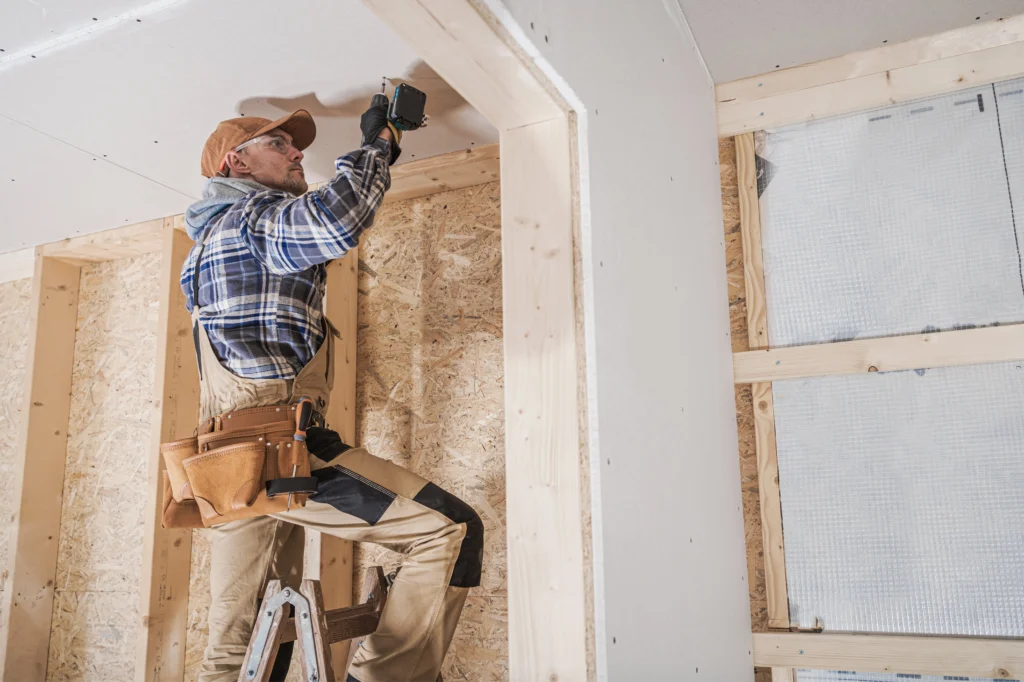Drywall is the foundation for smooth walls and ceilings, but Hawai‘i’s climate can be tough on it. From constant humidity and salt air to the threat of hurricanes, drywall in island homes faces challenges that make damage more common than on the mainland. When cracks, holes, or water spots appear, the question becomes whether to repair or replace. Making the right choice saves money, protects your home, and ensures long term durability.
Common Drywall Problems in Hawai‘i Homes

Hawai‘i homeowners often face drywall damage caused by unique local conditions:
- Moisture intrusion: high humidity and tropical storms increase the risk of water damage and mold
- Salt air corrosion: salt particles carried inland can weaken surfaces and framing over time
- Structural stress: hurricanes and heavy winds can cause cracks or loosen drywall panels
- Everyday wear and tear: dents, holes, and scratches from regular living
When Drywall Repair Is the Right Option
Not every issue requires replacing full sections. Repair is effective for:
- Small holes or nail pops: quick patches restore a smooth surface
- Hairline cracks: joint compound and taping can prevent them from spreading
- Localized damage: if water or impact is limited to one area and has not spread
- Cosmetic blemishes: surface scuffs or marks can be patched and repainted
In these cases, professional drywall repair restores your walls without the cost of major work. Explore drywall repair services offered by McKeague Drywall for a fast and reliable solution.
When Full Drywall Replacement Is Necessary
Some problems run deeper than the surface and require full replacement:
- Extensive water damage: drywall saturated by leaks or flooding often loses its structural integrity
- Mold growth: mold spreads quickly in humid climates, and contaminated drywall should be removed to protect health
- Large scale deterioration: salt air and long term humidity can weaken large sections beyond repair
- Sagging ceilings: damaged ceiling drywall can pose a safety risk and should be replaced rather than patched
In these cases, replacement ensures a strong, safe wall or ceiling. McKeague Drywall provides expert drywall installation and ceiling repair services to restore your home’s interior.
Cost Considerations for Repair and Replacement
Budget often plays a big role in deciding between repair and replacement:
- Repair costs less upfront, especially for minor damage
- Replacement may save money long term by preventing repeated repairs
- Ignoring mold or water damage can lead to expensive remediation later
Homeowners should weigh immediate savings against future expenses when deciding which option is best.
Hawai‘i Climate Factors to Keep in Mind
Hawai‘i’s climate makes drywall maintenance more critical:
- High humidity accelerates mold growth and weakens drywall structure
- Salt air can shorten the lifespan of walls and ceilings compared to drier climates
- Hurricanes and tropical storms can cause severe water damage that requires full replacement
These conditions mean that while drywall can last for decades in other regions, island homes often need more frequent repairs or replacements.
Making the Best Choice for Your Home
Choosing between repair and replacement depends on the type and extent of damage. Small cracks and holes can be fixed quickly, but extensive water damage or mold calls for replacement to keep your home safe. Professional contractors can inspect the damage and recommend the right solution for your situation.
For dependable drywall services, trust McKeague Drywall. From drywall repair to stucco and drywall mudding, our team helps Hawai‘i homeowners protect their properties. Need expert advice or service? Contact us today through our online form.

